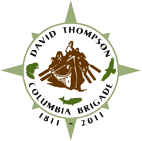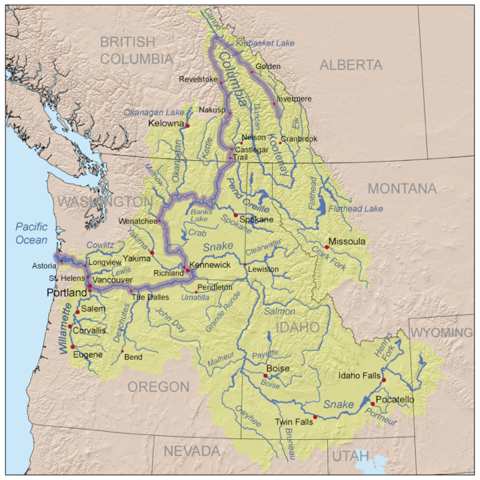Over two hundred years ago, in 1811, fur trader, explorer, surveyor, and mapmaker David Thompson reached the Pacific Ocean adding the Columbia River as the final leg of the fur trade highway between Montreal and the Pacific. His route would be used for fifty years as the major route across the Rocky Mountains by the twice annual Columbia Express, later adapted by the Hudson’s Bay Company to become the York Factory Express.
 The fur trade was a unique era that depended upon collaboration between native peoples and Europeans exchanging furs and other bounties of the land and rivers for trade items manufactured far away. Fur trade exploration shaped the boundaries of Canada and the United States.
The fur trade was a unique era that depended upon collaboration between native peoples and Europeans exchanging furs and other bounties of the land and rivers for trade items manufactured far away. Fur trade exploration shaped the boundaries of Canada and the United States.
 In 1806 David Thompson explored the present day “Lake Pend Oreille – Kootenai River Super Side Trip”, part of the Selkirk Loop drive. He was the first white man to explore this area and subsequently established a trading post in 1809 at present day Hope, Idaho and Sam Owen State Park called “Kullyspell House”. A historical marker identifies the area where this trading post existed. The Hope – Clark Fork area was a seasonal gathering place along Lake Pend Oreille where the Salish, Kalispel and Kootenai peoples harvested fish. This was also an established route to the buffalo grounds further east in Montana.
In 1806 David Thompson explored the present day “Lake Pend Oreille – Kootenai River Super Side Trip”, part of the Selkirk Loop drive. He was the first white man to explore this area and subsequently established a trading post in 1809 at present day Hope, Idaho and Sam Owen State Park called “Kullyspell House”. A historical marker identifies the area where this trading post existed. The Hope – Clark Fork area was a seasonal gathering place along Lake Pend Oreille where the Salish, Kalispel and Kootenai peoples harvested fish. This was also an established route to the buffalo grounds further east in Montana.
In 2011 there was a salute the Columbia River Basin and its history by paddling voyageur canoes 1800 kilometers (1200 miles) along David Thompson’s historic route from present day Invermere, British Columbia, to Astoria, Oregon.
 International Selkirk Loop
International Selkirk Loop